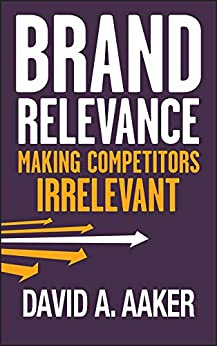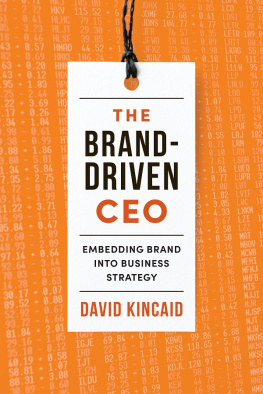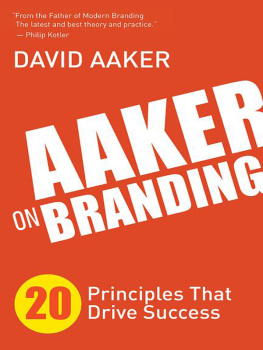Book Presentation:
Brand Leadership by David Aaker and Erich Joachimsthaler
Book Abstract
MAIN IDEA
Creating and progressively building strong brands is an important commercial activity for most business enterprises since:
- Brands are important and substantial financial assets that add significantly to the market value of the overall commercial entity.
- Brands that are well positioned can deliver sustainable competitive advantages allowing firms to differentiate themselves.
- Brands enhance profitability they allow companies to sell products and services at prices higher than the prevailing market rate.
For all that, however, the way that strong brands are built is rapidly changing and evolving. A new paradigm is emerging in which achieving brand leadership is becoming more important than simply building brand equity.

To succeed in building brand leadership, a business must overcome and address four key challenges:

In effect, the paradigm for brand building is evolving from the tactical and reactive approach of traditional brand management to the much more strategic and visionary brand leadership approach. Similarly, the focus of brand building is evolving from a limited single market scope to a much broader and more complex multiple market focus embracing the global perspective. And, at the same time, the key driver of brand strategy is evolving from measures like sales or market share to a better long-term metric, brand identity.
About the Author
DAVID AAKER is Vice-Chairman of Prophet Brand Strategy, a strategic professional services firm, and a Professor Emeritus at the Haas School of Business, University of California, Berkeley. He is widely acknowledged as the preeminent authority on brand equity and brand strategy. Dr. Aaker has published more than 90 articles and 11 books including Managing Brand Equity, Developing Business Strategies and Building Strong Brands. He graduated with a B.S. from MIT and a MS Ph.D. from Stanford University.
For more information on David Aaker, see http://www.prophet.com or http://www.davidaaker.com .
ERICH JOACHIMSTHALER is CEO of The Brand Leadership Company, a strategy consulting and management education firm, and Visiting Professor of Business Administration at the Darden School, University of Virginia. He is the author of more than 40 articles and case studies and is a sought-after speaker and consultant. Dr. Joachimsthaler completed his formal education with a Post Doctorate Fellowship at Harvard Business School.
For more information on Erich Joachimsthaler, see http://www.brandleadershipcompany.com .
Important Note About This Ebook
This is a summary and not a critique or a review of the book. It does not offer judgment or opinion on the content of the book. This summary may not be organized chapter-wise but is an overview of the main ideas, viewpoints and arguments from the book as a whole. This means that the organization of this summary is not a representation of the book.
Summary of Brand Leadership
(David Aaker and Erich Joachimsthaler)
The New Paradigm: Achieve brand leadership
Main Idea
The traditional brand management system is being superseded by the brand leadership paradigm because of the need to deal with new market complexities competitive pressures, the evolution of channels, global competition, multiple brands, aggressive brand extensions and the arrival of complex sub-brands.
Supporting Ideas
The new brand leadership paradigm is based on a number of assumptions:
- The brand building strategy should be aligned with the business strategy of the overall business enterprise.
- Brand leaders should be strategic and visionary rather than reactionary and focused on tactics.
- Brands are long-term intangible assets of the business, and programs which build the brand creates assets that underpin the future success of the business enterprise.
- Brands enable a business to avoid the need to compete on price and instead sustain premium pricing levels.
- The actual value of the brand is difficult to quantify precisely but it can be estimated as a percentage of the earnings stream generated by each major product.
The new paradigm of building brand leadership is rapidly replacing the classic brand management system. The classic system worked well for decades, in part because brand management was always considered a high profile position. Thus, managers who were exceptional planners and doers tended to be attracted to the brand manager role. In an increasingly more complex business environment, however, the old paradigm is becoming less and less relevant. The new brand leadership paradigm is becoming more and more important.
For example, consider the brands which are today competing to achieve brand leadership:
- Virgin Atlantic Airways founded and led by Richard Branson with the objective of providing all classes of traveler with the highest quality of travel at the lowest cost.
- L.L. Bean with its legendary Guarantee of 100% satisfaction
- Marriott which is in the process of extending its brand by creating Marriott Residence Inns, Courtyard by Marriott and Fairfield Inn by Marriott.
- Adidas with a new focus on participation in sport rather than attempting to equip just the elite sports people.
- Nike with the successful introduction of its flagship stores, NikeTown, and Air Jordans.
- Swatch which, since its 1983 launch, has built its brand around the concept of fun, youthful and provocative watches.
- MasterCard which has become a brand leader by sponsoring the soccer World Cup.

If the goal of brand leadership is to build strong brands, how do you tell whether or not a brand is strong? Fortunately, it is relatively easy to estimate the value of a brand using straightforward logic:
- Identify the earnings stream for each major product in the brand family.
- Decide what proportion of that earnings stream can be attributed to:
- Fixed assets plant and equipment.
- Intangibles patents, systems, people or processes.
- The brand.
- Aggregate the various product market values to determine an overall value for the brand equity.
This will give a subjective measure (plus or minus 30-percent) of the overall brand equity. And that brand equity, in turn, can be broken down into four dimensions:

















